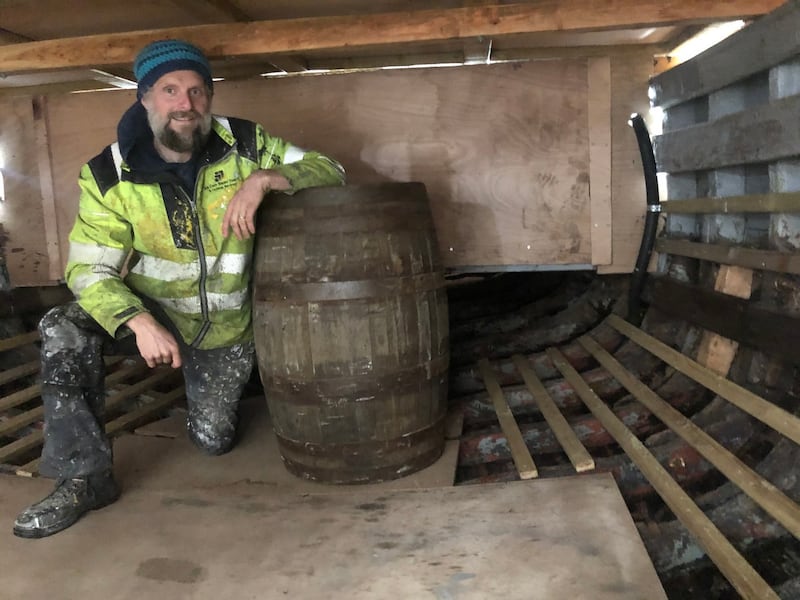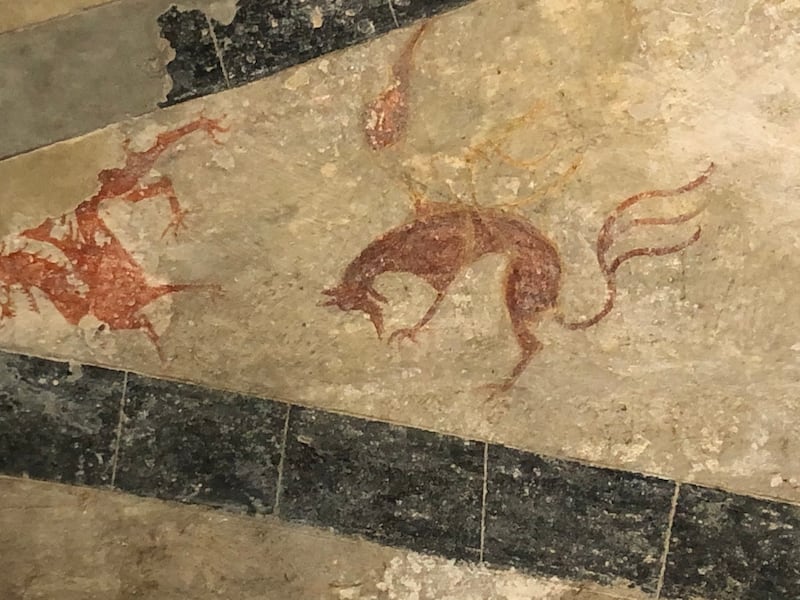I’m hunkered down with Clare Island man Carl O’Grady inside the cramped hold of a 36ft-long, timber-hulled boat tied to a buoy in the middle of the island’s harbour. We’ve both crawled in but there’s barely enough room for the pair of us. And there’s no question of standing up.
It's dark and damp in the hold and, as waves lap the little boat, it bobs up and down, swaying gently from side to side. But this is progress. Not long ago, the boat, which is named the Dolphin, was lying at the bottom of the sea, abandoned a few years back off the pier in Belmullet.
But O'Grady raised it and repaired it, and so now, here it sits, back on home turf, as it were, in Clare Island's harbour, where for many years it was the O'Grady family-run ferry linking the island and the Mayo mainland.
Inside the dank hold, O’Grady’s blue eyes shine with messianic zeal.
“I love being here,” he says. “It’s class. I love it, I just love it. I love sitting here and listening. I love the fact that I was able to do it,” he says of the restoration and, caressing the hull’s ribs, he adds: “I love that these were made with an adze. They had no power tools; just a saw and adze to shape the wood.”

O'Grady is on a mission to turn Clare Island into a destination for whiskey enthusiasts and the Dolphin will play a key role. The restored little boat is the maturation vessel for premium brand Clare Island Whiskey. Six hundred litres of Connacht Distillery liquor is already maturing in three former Kentucky bourbon oak barrels and will shortly be placed on board the Dolphin to finish the process.
“Matured at sea” is a key selling point, as far as O’Grady is concerned, and the only way high-end enthusiasts will be able to buy a bottle is by visiting the island and taking the tour.
This involves, on arrival via the modern ferry from Roonagh near Louisburgh, the serving of tea, coffee and canapés beside the 16th century tower house that is Grace O'Malley's Castle. There, tour participants will hear the story of Grace and her links to the island.
We'll malt it ourselves and distil right here on the island. The restaurant will serve local produce as well, sea food and vegetables. So it's a circular economy
Then it's off on a guided excursion, first stop the Cistercian Abbey in the centre of the island dating from, give or take, the 12th or 13th centuries. The tiny restored abbey is home, on the chancel ceiling, to painted religious iconography, and medieval depictions of a stag hunt plus some pre-Christian fantastical creatures.
One such is a stylised fox-like creature. Leaping off from the ground while at the same time looking down, he appears to jump, surprised and perhaps delighted, as though startled by something. Contemporary fame awaits as the little fellow has been adopted by O’Grady as the mascot for his Clare Island Whiskey. . .
Next stop is the island’s lighthouse, a sturdy structure perched on top of the 400m tall, north and west facing cliffs where the island plunged into the Atlantic, next stop Boston.
Another O’Grady, the late Jackie, was the last lighthouse keeper before it was automated. For the visitors, his brother Chris tells the story of the place while serving everyone with a nip of Carl’s whiskey.
Then it’s off to the Sailor’s Bar where fisherman Joe O’Toole’s locally caught lobsters arrive fresh from his boat, to be cooked and served – along with Killary Harbour mussels, freshly-baked brown bread and salads – washed down if you fancy with a pint or two of Guinness, all accompanied by music, dance and poetry, or, as Carl puts it, “a full-on session with the craic”.
When I visit the bar and restaurant is getting a makeover ahead of the resumption of outdoor dining and the – much hoped for – full reopening of the hospitality sector.

Beside the Sailor's Bar is a large vacant lot where O'Grady hopes by 2025 to have built his own distillery, malting house and bonded warehouse – in other words, full island-based whiskey production. He's being helped by consultant Jack O'Shea, formerly of Pearse Lyons Distillery of Dublin.
O’Grady sees the whole whiskey project as playing a role in securing the island’s future prosperity.
“I want to source my grain from island farmers. Spent grain can then be used as animal feed,” he says. “We’ll malt it ourselves and distil right here on the island. The restaurant will serve local produce as well, sea food and vegetables. So it’s a circular economy – consuming from the island but putting back and employing local people too.”
On a bright sunny day (such as when I visited), Clare is stunningly beautiful and is always rich in history – from the abbey, to the memory of hard times and famine etched into the landscape, to Robert Lloyd Praeger’s landmark Clare Island Survey over 100 years ago. It is an uplifting and welcoming place to visit.
The whiskey tour ends back at the harbour where the Dolphin and its whiskey maturing barrels may be inspected . . . and you can collect your bottle of Clare Island Whiskey, signing yourself into the logbook of owners.
I am reliably informed but cannot confirm from personal experience (yet) that it is a pale yellow, honey blond single malt with flavours of coconut and vanilla. The 46 per cent proof, three-year-old single malt will be sold – but only as part of the overall experience of visiting the island – in 700ml clear glass, numbered bottles specially made in China and housed in a wooden case made from reclaimed harbour timber.
[ clareislandwhiskey.ieOpens in new window ]
Clare Island Whiskey tours include ferries and transport on the island, visits to Grace O’Malley’s Castle, the 12th century Abbey, the Lighthouse, the lobster seafood meal at the Sailor’s Bar, musical entertainment, plus a numbered and cased presentation bottle of aged-at-sea whiskey. The cost is €450 (or €170 without the whiskey).
All participants also receive a Clare Island Whiskey Keel Coin giving discounts at partner companies, including Connacht Distillery in Ballina, Co Mayo, and the Hyatt Centric Hotel in Dublin. Clare Island Whiskey Tours take place every Sunday, from 11am to 6.45pm, between July and September and are limited to 25 people per tour.











